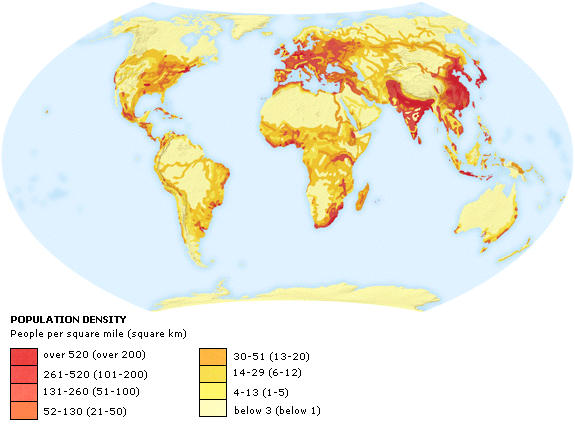DK People & Places: Population
People have lived on Earth for two million years. For most of that time, the population has remained small, as the number of births has roughly equaled the number of deaths. Improved medicine and health care, better sanitation, improved farming methods producing more and better food, and less physical work have all led to fewer infant deaths and more people living longer. This has caused a massive increase in population over the last 150 years. Today, the world’s population is more than six billion and is rising at a rate of about one million a week.

The world’s six billion people are not evenly distributed around the planet, but concentrated in areas where the climate is suitable and the land habitable. This concentration of people is measured by population density, which is the average number of people living in each square mile.
Cities such as Hong Kong have solved the problem of limited space by building up rather than out. This has led to a growing number of so-called megacities, with populations of more than ten million. However, overcrowding, pollution, and a lack of open space make such cities unpleasant to live in.
Top five biggest cities and populations: Tokyo, Japan 34.9 million New York, NY 21.6 million Seoul, South Korea 21.1 million Mexico City, Mexico 20.7 million São Paulo, Brazil 20.2 million
Country with smallest population: Vatican City 900
Most densely populated country: Monaco 42,649 people per sq mile (16,404 people per sq km)
Least densely populated country: Mongolia 4 people per sq mile (2 people per sq km)
Country with highest birth rate: Niger 55 per 1,000 population
Country with lowest birth rate: Hong Kong/Macao (China) 7 per 1,000 population
Country with highest death rate: Sierra Leone 25 per 1,000 population
Country with lowest death rate: United Arab Emirates 2 per 1,000 population
Country with the highest life expectancy: Japan (81)
Country with the lowest life expectancy: Sierra Leone (39)
Richest country (highest GNP*): United States $9,602 billion
Poorest country (lowest GNP*): Tuvalu US$3 million
*GNP = Gross National Product
